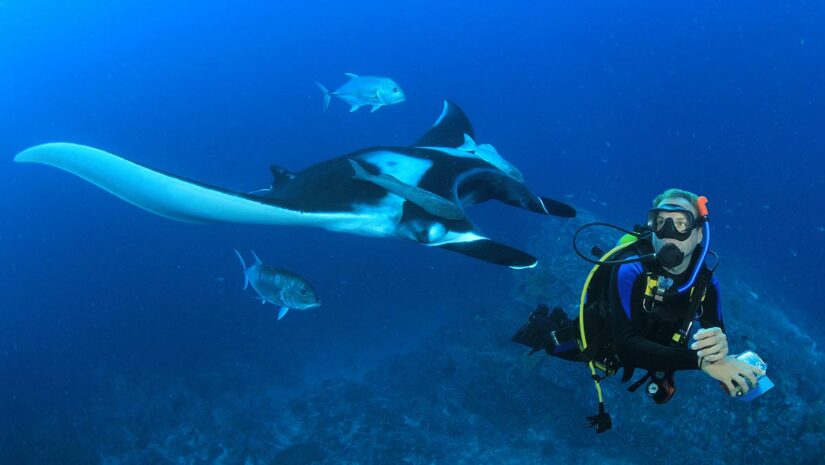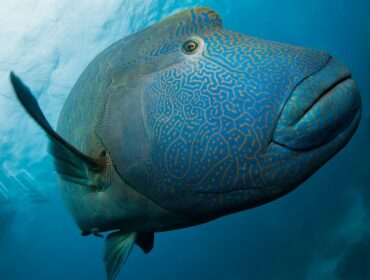A distant cousin of the shark, stingrays and other rays like skates, electric rays, guitarfishes and sawfishes are classified as Batoidea, a type of cartilaginous fish and have around 500 described species in thirteen families. They are pretty widespread and can be found in seas on the floor, across the world in both temperate and cold-water. The manta is an exception living in open waters and a few fresh water species living in brackish bays and estuaries. Let’s explore the different types of rays — manta ray vs stingray vs eagle ray — to understand their unique characteristics.
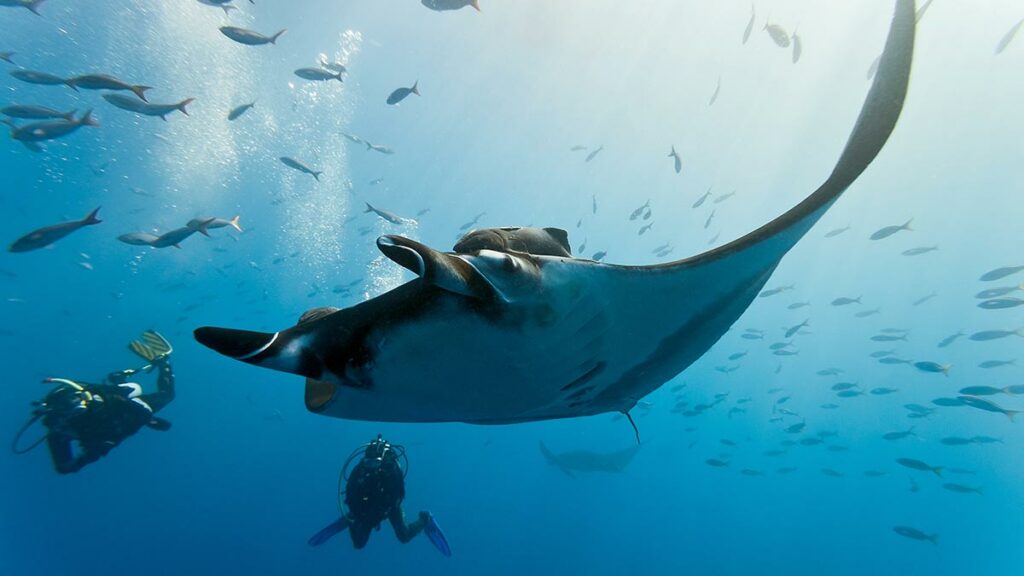
Meet the Rays
Rays, also known as Batoidea, are a fascinating group of cartilaginous fish that inhabit various marine environments worldwide.
Species
Rays possess a diverse range of species, including the majestic manta rays and the elusive stingrays. They display an impressive array of sizes, from small freshwater species to enormous oceanic giants.
Characteristics
These graceful creatures are known for their unique flat bodies and wide pectoral fins, which resemble wings, enabling them to glide through the water with remarkable agility.
Their disc like shape (in most ray species) have five ventral slot-like body openings called gill slits that lead from the gills and their mouths on the undersides.Because their eyes are on top of their bodies they cannot see their prey and use smell and electro-receptors similar to those of sharks.
Diet
Rays primarily feed on mollusks, crustaceans, and small fish, employing their powerful jaws and specialized dentition. Their intriguing biology and captivating underwater maneuvers make rays a captivating subject for marine enthusiasts and researchers alike.
Behavior
These docile creatures are often misunderstood and categorized as dangerous which is not really the case. While they do posses stings they generally do not attack aggressively and if threatened, their primary reaction is to swim away. However, a defensive reaction causes it to whip up their stinger which is often the case when attacked by predators or stepped on. Even then, if stung by a stingray it is rarely fatal and if stung in the lower limb region will most likely just be a cut causing pain, swelling and muscle cramps from the venom, or even an infection unless it hits the upper body, a major artery or causes a very deep puncture.
Types of Rays in the Ocean
Stingrays
Smooth Stingray or Short-Tail Stingray
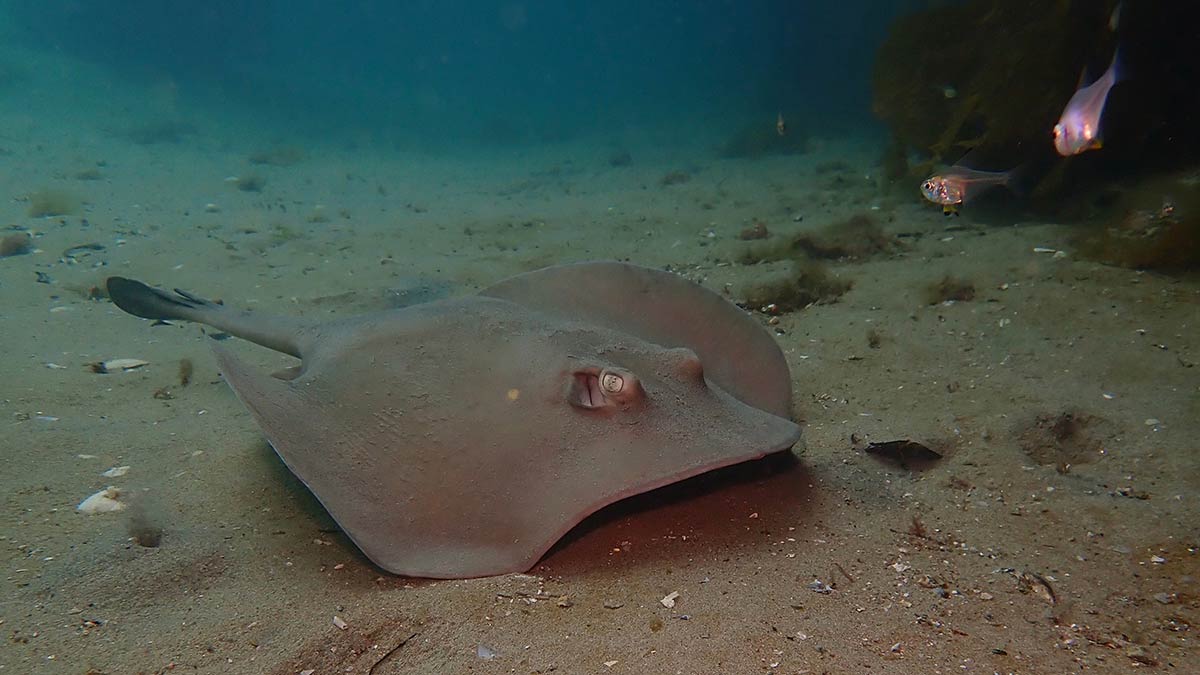
The Smooth Stingray, also known as the short-tail stingray, is the largest of the world’s stingrays. Found around South Africa, Mozambique, Australia and New Zealand, it can weigh well over 350 kg (770 lb), and sand across over 2 m (6 ft) in diameter. It has an an overall length of up to 4.3 m (14 ft) including its tail, which is why it’s sometimes called a bull ray. This bluish-grey or grey-brown stingray often has two stings — a small one in front one and the usual rear one considerably larger — which bear toxin glands.
Southern Stingray
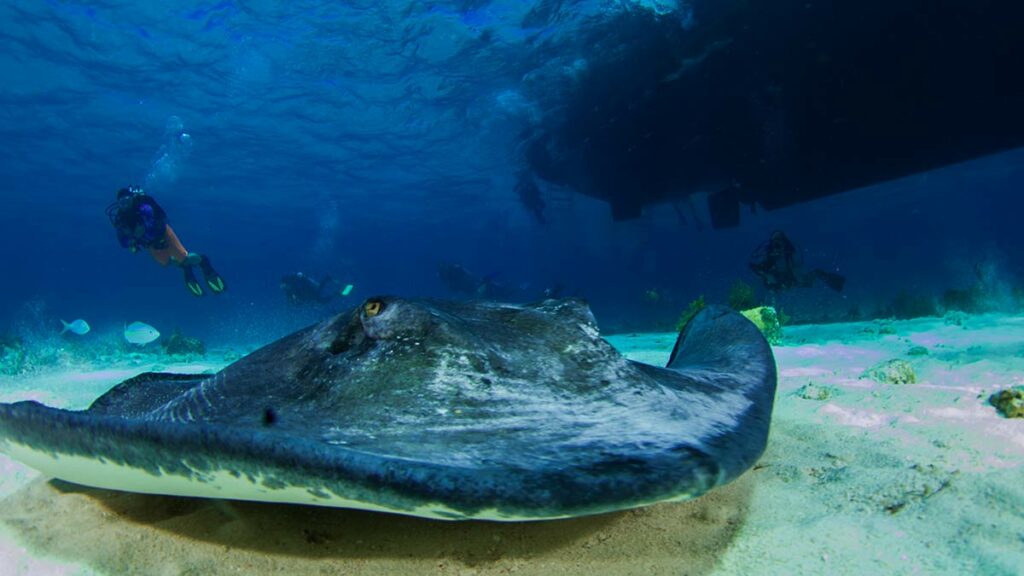
This type of stingray is commonly found in the tropical and subtropical waters of the southern Atlantic Ocean, Caribbean Sea. and Gulf of Mexico. It has a flat, diamond-shaped body, with a mud brown upper-body, white underbelly and venomous barbed tail. Stingray City in the Grand Caymans is famous for swimming, snorkeling and diving with this type of stingray.
Blue Spotted Stingray
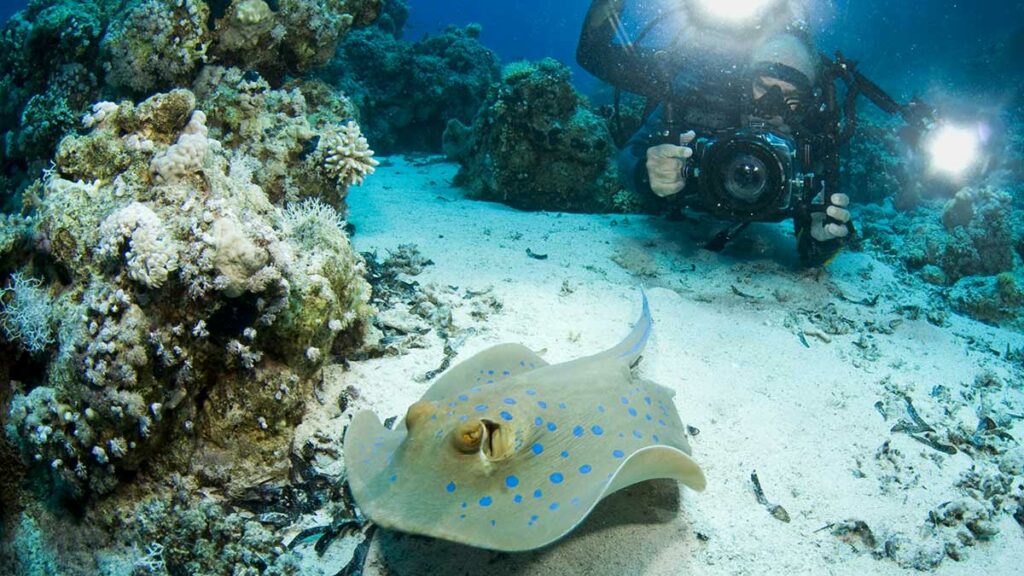
This colorful stingray has large bright blue spots on its oval, elongated disc and blue side-stripes along the tail. They are found in the Indo-West Pacific region, mostly from the Red Sea and East Africa to the Solomon Islands, Japan, and Australia. They reach a maximum length about 70 cm.
Eagle Ray
Eagle rays, unlike stingrays, tend to live in the open ocean rather than on the bottom of the sea. Compared with other rays, their tails are quite long and they are a well-defined rhomboidal shape featuring distinct wings.
Spotted Eagle Ray
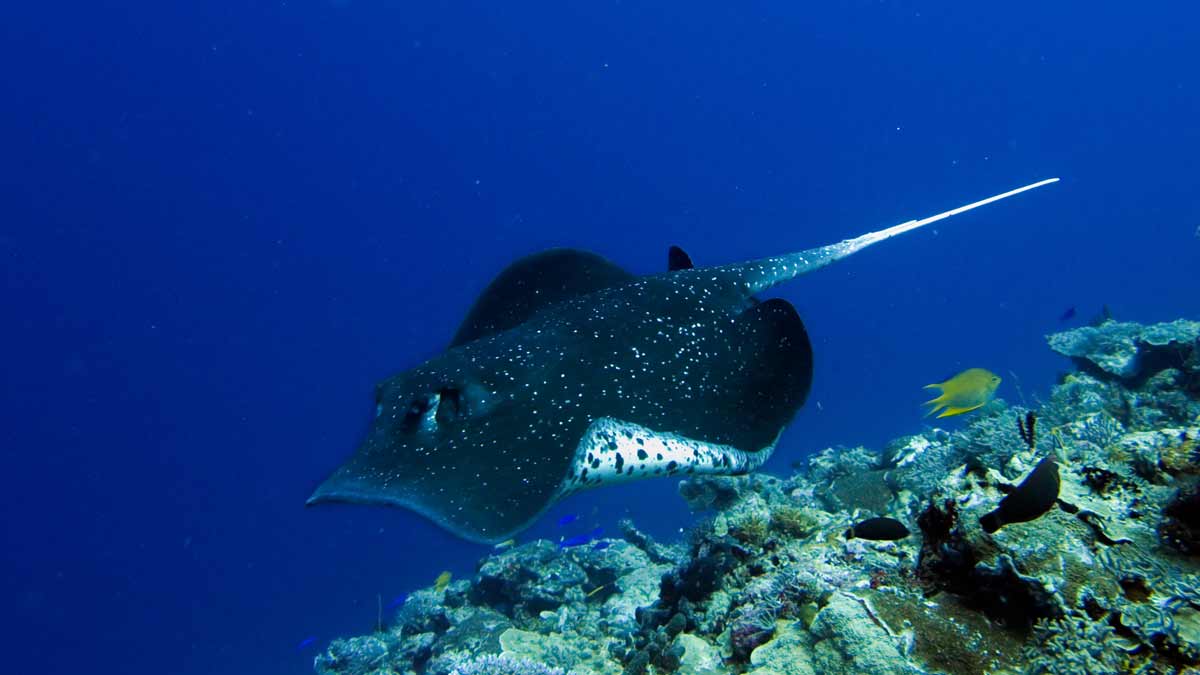
The spotted eagle ray is one of the most beautiful rays and is also known as the bonnet ray. Its inky blue body is covered with almost star-like white spots. Weighing about 230 kg (about 507 lbs), its wings can grow as wide as 2.5m (8 ft) and can reach up to 5m (16 ft) in length with its tail. Spotted eagle rays are a spectacular sight to see swimming just below the surface of open waters in large schools. Additionally, they can even be spotted jumping out and across the waters sometimes.
Manta Rays

The largest of all ray species, the manta is part of the eagle ray family. Found throughout tropical waters of the world, typically around coral reefs, the manta ray can grow to a width of 7.6 meters (25 ft) across and weight about 2,300 kilograms (5,100 lbs)!
Their huge size however, doesn’t in anyway affect their mobility and these giant creatures are gracefully agile underwater. Mantas are filter feeders living off plankton, fish larvae, and the like. They frequently clean stations where small fish such as wrasse, remora, and angelfish swim in the manta’s gills and over its skin it of parasites and dead tissue. As a diver, to spot one of these magnificent creatures, is often described as an experience of a lifetime and The Manta Ray Night Dive in Kailua Kona, Hawaii is rated among the Top 10 Dive Sites of the World.
Does the manta ray sting?
No, manta rays do not possess a stinger or venomous barb like stingrays do. Manta rays are harmless to humans and other animals. They are gentle filter feeders, using their wide mouths to consume plankton and small organisms, without any form of stinging or aggressive behavior.
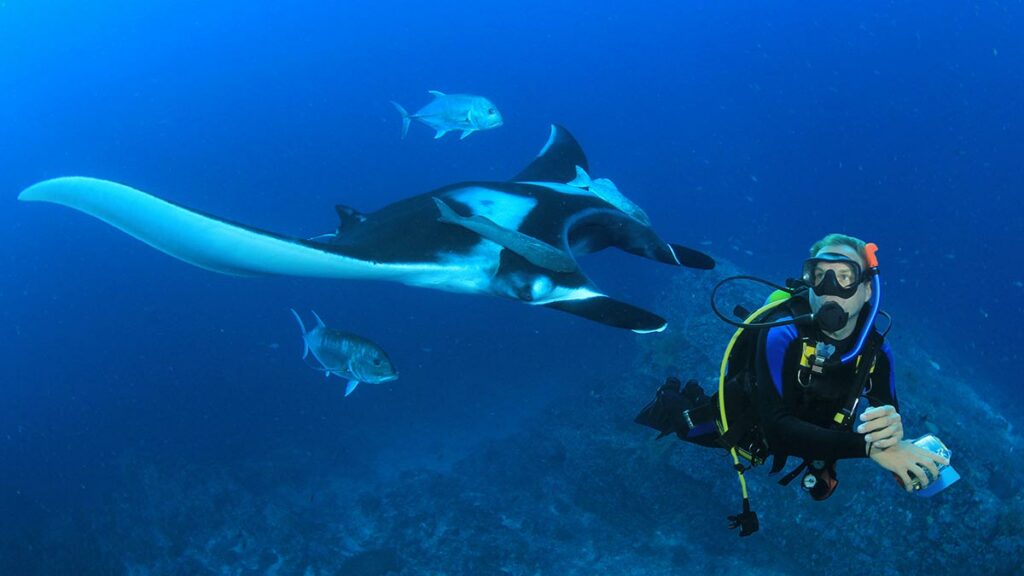
Manta Ray vs Stingray: What’s the difference?
These two rays may share a similar appearance, but they have distinct differences between manta ray vs stingray are notable. Manta rays belong to the Mobulidae family, while stingrays are part of the Dasyatidae family. Size is a notable contrast; manta rays are also significantly larger, with some species reaching up to 23 feet in wingspan, whereas stingrays are typically smaller. Another discrepancy lies in their behavior and diet. Manta rays are filter feeders, consuming plankton, while stingrays are bottom-dwellers that feed on crustaceans and mollusks. Moreover, the manta ray possesses a sleek, diamond-shaped body, vs the stingray, which features a more flattened shape with a venomous stinger, located on their tail, used for self-defense.
Stingray vs Eagle Ray: How to Tell Them Apart
Stingrays and eagle rays share similarities as they both belong to the same family, Myliobatidae, but they also have notable differences. One significant contrast lies in their size and shape. Stingrays have a more flattened body, whereas eagle rays possess a more elongated and streamlined shape. Another distinction is their behavior and diet. Stingrays are bottom-dwelling creatures, often burying themselves in the sand, and feed on crustaceans and mollusks. On the other hand, eagle rays are more active swimmers and are known to hunt fish and other small prey. Additionally, stingrays possess a venomous stinger on their tail, used for self-defense, while eagle rays lack this feature.
More About the Rays: Frequently Asked Questions
Manta rays and stingrays have different temperaments. Manta rays are generally known to be gentle and harmless, often curious around humans. Stingrays, on the other hand, can be defensive if they feel threatened or provoked, and their venomous stingers should be approached with caution. It’s important to respect their space and observe from a safe distance.
Manta rays and stingrays may coexist in the same marine habitats, but their interactions are limited. They typically do not interact or socialize with each other. Manta rays are peaceful filter feeders, while stingrays have their own behavioral patterns and territorial tendencies, leading to minimal interaction between the two species.

